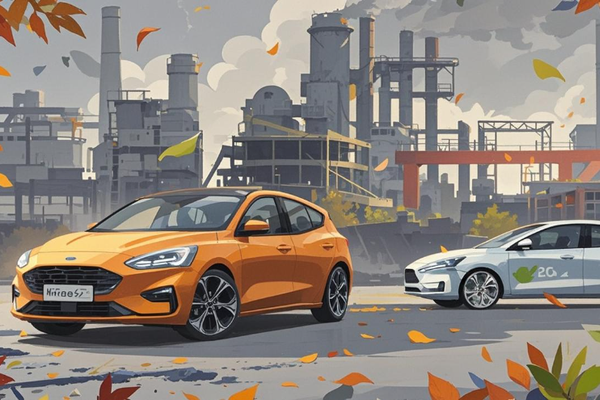福特福克斯停产原因及其启示
福特福克斯,这款曾经风靡全球的家用轿车,如今却面临停产的命运。 recent reports indicate that Ford will cease production of the Focus at its Saarlouis plant in Germany in November, and Mazda has also confirmed the end of production for the Mazda6 sedan. What led to the decline of these once-popular models, and what can the automotive industry learn from their fate?
市场需求变化与销量下滑
福特福克斯的停产,首先源于全球市场销量的下滑。 According to 36Kr, the global market for compact cars has been declining, and the Focus has not been immune to this trend. In China, the country’s largest auto market, sales of traditional internal combustion engine vehicles have been declining due to stricter emissions regulations and the rise of new energy vehicles (NEVs). The Focus, as a compact car, has been particularly affected by this shift in consumer preferences.
Furthermore, the Focus has faced intense competition from other compact car models, such as the Volkswagen Golf and the Honda Civic. These competitors have consistently offered innovative features and improved fuel efficiency, putting pressure on the Focus to keep up. However, the Focus has struggled to maintain its competitive edge, leading to a decline in market share and sales.
利润率过低与成本压力
除了市场需求的变化,福特福克斯停产的另一个原因是利润率过低。 According to Ford’s financial reports, the Focus’s profit margin has been far below expectations, making it difficult for the company to continue producing the model at a loss. This low profit margin can be attributed to several factors, including increased production costs and stagnant sales.
Firstly, the cost of producing the Focus has increased due to stricter emissions regulations and the rising cost of materials. To meet these regulations, Ford has had to invest in new technology and equipment, which has driven up production costs. Secondly, the Focus’s stagnant sales have made it difficult for Ford to spread these fixed costs across a larger number of units, further reducing the model’s profit margin.
质量问题与用户体验
除了外部市场因素,福特福克斯停产也受到内部质量问题的影响。 According to Sina Finance, the fourth-generation Focus launched in 2018 faced a wave of quality complaints due to issues with its three-cylinder engine and dry dual-clutch transmission. These problems not only damaged the Focus’s reputation but also led to a significant drop in sales, particularly in the North American market.
The negative user experience and declining sales have further exacerbated the Focus’s financial difficulties, making it even harder for Ford to justify continued production of the model.
新能源汽车浪潮与转型压力
在新能源汽车逐渐兴起的今天,传统燃油车辆面临着巨大的转型压力。 According to the China Association of Automobile Manufacturers, NEV sales in China reached 5.91 million units in 2021, accounting for 35.7% of the country’s total vehicle sales. This rapid growth in NEV sales has put pressure on traditional automakers to invest in and develop their own electric vehicle (EV) offerings.
For Ford, the low profit margin of the Focus and the need to invest in new energy vehicle technology have made it difficult to continue producing the model. Instead, the company has chosen to focus on its more profitable SUV models and invest in the development of new electric vehicles, such as the Mustang Mach-E and the upcoming Ford F-150 Lightning.
启示:适应市场变化与转型升级
福特福克斯的停产事件为传统汽车品牌带来了深刻的启示。 In today’s rapidly changing market, automakers must be able to adapt to new consumer preferences and technologies. This means not only investing in research and development but also being willing to discontinue underperforming models and refocus resources on more promising products.
For Ford, the decision to stop producing the Focus was a difficult one, but it was ultimately necessary to ensure the company’s long-term success. By focusing on more profitable models and investing in new energy vehicle technology, Ford can better position itself to compete in the rapidly evolving automotive market.
In conclusion, the stop production of Ford Focus is a result of market demand changes, low profit margins, quality issues, and the pressure to transition to new energy vehicles. This event serves as a reminder for traditional automakers to adapt to market changes, prioritize profitable models, and invest in the development of new energy vehicles to ensure their long-term competitiveness.
References:

